|
Progressive Men
Index
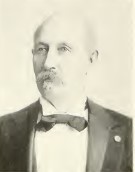 SAMUEL EMERY
ADAMS a member of the city council of Minneapolis, was
born in Reading, Windsor County, Vermont, December 1,
1828. He is a descendant of
the old Lexington, Massachusetts, family of that name.
His great-grandfather served as a soldier in the
Revolutionary War as a member of the Connecticut troops
under General Israel Putnam. Solomon Wright Adams, the
father of Samuel, was a tiller of the soil in the state
of Vermont, and though in rather limited circumstances
was a prominent man in the locality in which he lived.
He served the people of the community as a selectman,
assessor, postmaster, and as their representative in the
state legislature. His wife’s maiden
name was Mary Adaline Emery. SAMUEL EMERY
ADAMS a member of the city council of Minneapolis, was
born in Reading, Windsor County, Vermont, December 1,
1828. He is a descendant of
the old Lexington, Massachusetts, family of that name.
His great-grandfather served as a soldier in the
Revolutionary War as a member of the Connecticut troops
under General Israel Putnam. Solomon Wright Adams, the
father of Samuel, was a tiller of the soil in the state
of Vermont, and though in rather limited circumstances
was a prominent man in the locality in which he lived.
He served the people of the community as a selectman,
assessor, postmaster, and as their representative in the
state legislature. His wife’s maiden
name was Mary Adaline Emery.
When Samuel was but a year old the
family moved to Bellows Falls, and thence to Rutland
County, where he was raised on his father’s farm.
He attended the academies at Chester, Springfield
and Thetford, and prepared for college in the West
Randolph Academy. In 185 1 he entered Dartmouth College,
but on account of ill health was forced to leave the
following year. In 1853 he received an appointment from
President Pierce as a route agent between Boston,
Massachusetts, and Burlington, Vermont. He continued in
that vocation till 1855, when he was compelled to resign
on account of severe bronchial trouble, and came to
Minnesota to find relief. He arrived at St. Anthony
Falls in the fall of 1855, but returned to Vermont a few
months later. He came back to Minnesota the following
year, locating at Monticello, in Wright County, June 1,
1856, and engaged in the mercantile trade. In 1857 he
was elected a member of the state senate, and re-elected
in 1859. The latter year he was appointed special agent
of the post office department for Iowa and Minnesota. In
1860 he was appointed receiver of the land office at St.
Cloud, Minnesota, leaving it next year, when the
Republicans came into power. He was in politics what was
then known as a “war Democrat,” willing to do all in his
power to perpetuate the Union and preserve it intact. In
1862 he was appointed a paymaster in the army by
President Lincoln, and was breveted lieutenant-colonel
in 1865 “for meritorious services in the field.” He did
not leave the service, however, until January, 1866,
when he was honorably discharged. Colonel Adams at once
returned to Monticello and engaged in the mercantile
trade and real estate operations.
Although he had been admitted to
the bar in 1862 he gave no attention to legal business,
except in connection with real estate transactions.
While at Monticello he was a member and president of the
board of education of that town for many years, and
always took an active interest in educational matters.
He was master of the State Grange for eight years and of
the National Grange for two years, contributing in every
way possible to the elevation and prosperity of the
agricultural and toiling masses. He was president of the
State Agricultural Society in 1879, and is now and has
been for many years a member of the State Historical
Society.
While at Monticello he also engaged
in the newspaper publishing business, and was for a
number of years editor and proprietor of the Wright
County Times. In May 1883, Colonel Adams removed to
Minneapolis, where he has ever since resided, engaged in
the real estate and insurance business. Having performed
valuable services in 1891 as a member of the commission
appointed to award damages in the opening and extension
of new streets in Minneapolis, the Republicans of the
Fourth Ward forced the nomination upon him for alderman
from that ward in 1892. He was elected for a term of
four years, and was re-elected in 1896.
Mr. Adams has been one of the most competent and
faithful men that have ever served in that body. He
served continuously on the ways and means committee, and
was also on the committees on claims, waterworks,
markets and underground wires. He has been strenuous in
his opposition to the custom of awarding contracts to
other than the lowest responsible bidders, and at the
time the reservoir question came up in the council in
1895 was strongly opposed to this improvement, because
it necessitated an increase in the bonded indebtedness
of the city. When he was renominated to the council in
1896 he received the indorsement of the Good Citizenship
League, and was re-elected by a large majority.
In politics and religious matters
Colonel Adams is inclined to be independent, preferring
to estimate parties and creeds by acts rather than
profession. He is a thirty-third degree Mason, and is a
charter member of the Monticello Lodge. He is inspector
general of the Scottish Rite, and past senior grand
warden of the Grand Lodge of Minnesota; also a member of
George N. Morgan Post, G. A. R.
July 21, 1859, he was joined in wedlock to
Augusta J. Smith, of Pittsford, Vermont, and they have
two sons—Henry Rice, engaged in the insurance business
in Minneapolis, and John Cain, formerly Assistant
Surgeon United States Army, and now located at West
Superior, Wisconsin.
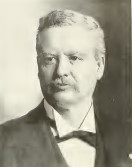 ALBERT ALONZO
AMES is one of the best known names in the city of
Minneapolis, and at various times during his career has
been the leader of a larger and more enthusiastic
following probably than has ever been attached to the
fortunes and person of any single citizen of that city.
He was born at Garden Prairie, Boone County, Illinois,
January 18, 1842. He was the fourth son of a family of
seven boys. His parents were Alfred Elisha Ames, M. D.,
who died in Minneapolis in 1874, and Martha A. Ames, who
still resides in Minneapolis. Dr. Alfred Elisha Ames
came with his family to Minneapolis in the spring of
1852, before the locality had a name and while it was
still a portion of the Ft. Snelling reservation. ALBERT ALONZO
AMES is one of the best known names in the city of
Minneapolis, and at various times during his career has
been the leader of a larger and more enthusiastic
following probably than has ever been attached to the
fortunes and person of any single citizen of that city.
He was born at Garden Prairie, Boone County, Illinois,
January 18, 1842. He was the fourth son of a family of
seven boys. His parents were Alfred Elisha Ames, M. D.,
who died in Minneapolis in 1874, and Martha A. Ames, who
still resides in Minneapolis. Dr. Alfred Elisha Ames
came with his family to Minneapolis in the spring of
1852, before the locality had a name and while it was
still a portion of the Ft. Snelling reservation.
The subject of this sketch was then
a lad of ten years. He attended the public schools until
sixteen, graduating from the high school, which was at
that time a department of the Washington school, then
located on the block now occupied by the new court house
and city hall. In 1857, while still attending the high
school, he served as “printer’s devil” and as a
newspaper carrier for the Northwestern Democrat,
published by Maj. W. A. Hotchkiss, the first paper
issued in Minneapolis on the west side of the river. The
building where the Democrat was published is still
standing on the southeast corner of Third Street and
Fifth Avenue South. It was in his
capacity as “printer’s devil” that Albert Alonzo Ames
earned his first dollar.
In the summer of 1858 he commenced
the study of medicine and surgery with his father, and
after attending two preliminary and two regular courses
at the Rush Medical College, Chicago, he graduated with
the degree of M. D., February 5, 1862, at the age of
twenty. In the following August, Dr. A. A. Ames, who had
returned to Minneapolis to begin the practice of his
profession, at the call of President Lincoln helped to
organize Company B, of the Ninth Minnesota Regiment,
enlisting himself as a private.
That was the time of the Indian troubles on the
frontier, and the men of the Ninth Regiment, who had
been given fifteen days’ leave of absence after
enlisting, in which to return to their homes for the
purpose of settling up their affairs, were ordered
hurriedly to the front against the Indians, who were
rapidly advancing on Minneapolis.
Dr. Ames had been appointed orderly sergeant, a
musket was issued to him, which he still possesses, and
he was ordered to gather up the men of his command for
active duty. A few days afterward he was commissioned
assistant surgeon Seventh Minnesota Regiment Infantry
Volunteers, and was ordered to report to that regiment
then en route to Fort Ridgeley, which the Indians were
infesting. Dr. Ames served with his regiment during its
three years of hard service, and was promoted to the
rank of Surgeon Major in July, 1864, when he was only
twenty-two years of age.
Dr. Ames returned to Minneapolis at
the close of the war, but being of an adventurous and
ambitious spirit he set out for California by way of the
Isthmus in 1868. In California he went into the
newspaper business and soon became managing editor of
the Alta California, the leading paper on the Pacific
Coast. In the fall of 1874 he was summoned back to
Minneapolis to the death-bed of his father, and he has
been a resident of the city almost continuously ever
since. He has always taken an active interest in
politics, his political sentiments being those
ordinarily entertained by those who are known as “war
Democrats.” In the fall of 1867 he was elected a member
of the legislature from Hennepin County on what was
called the “soldier’s ticket.” In 1876 he was elected
“centennial mayor” of Minneapolis. ln 1882 he was again
elected to the same office, and in 1886 was for the
third time chosen mayor of the city. In the latter year
he was nominated by the Democratic party for governor
and in the race for the latter office reduced the
previous large Republican majorities to only 2,600, the
actual result being in doubt for some days. He was also
defeated as Democratic nominee for congress and for
lieutenant governor, having the misfortune to belong to
the minority party in the state. At this writing Dr.
Ames maintains an independent stand regarding politics,
his Democracy meaning Jeffersonianism and his interest
in politics being directed chiefly by his sympathy for
the masses. In accepting the
nomination for Governor in 1886, Dr. Ames asked the
Democratic convention to pledge the party to the support
of a bill for the establishment of a Soldier’s Home in
Minnesota. This resolution was adopted, and, although
his party was unsuccessful, the Republicans accepted his
suggestion and the result is the commodious and well
appointed retreat for the aged and indigent veterans on
a commanding site at the junction of the romantic
Minnehaha with the majestic Mississippi. Dr.
Ames served as surgeon of this institution for
nearly five years after its establishment when his
professional duties necessitated his resignation.
Dr. Ames has been Master of Hennepin Lodge, No.
4, of the Masonic order; High Priest of St.
John’s Chapter, No. 9 Eminent Commander of Zion
Commandery, No. 2, Knights Templar, and Grand Chancellor
of the Grand Commandery Knights Templar of Minnesota. He
has been Chancellor Commander of Minneapolis Lodge, No.
I, Knights of Pythias, Grand Chancellor of Minnesota and
Supreme Representative to the Supreme Lodge of the world
from this jurisdiction. He was on the charter list of
No. 44, Benevolent and
Protective Order of Elks, the pioneer lodge of the
Northwest, and its first Exalted Ruler. He is a member
of the G. N. Morgan Post, No. 4,
G. A. R.
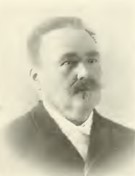 BERNDT
ANDERSON is dairy commissioner of the state of
Minnesota. Mr. Anderson is a native of Sweden, having
been born at Lund August 2, 1840, the
son of Lars Anderson and Anna Christiansen (Anderson.)
Mr. Anderson enjoyed the educational advantages afforded
by the elementary schools of his native town, after
which he attended the University of Lund, where he was
graduated in 1865. His diploma for that institution gave
him admission as an officer in the internal royal
department at Stockholm. He was naturally of a
scientific bent, and subsequently pursued the study of
natural science in Berlin and Dresden, Germany, for two
years. He came to America in 1880 and located in
Minnesota. He was a gentleman of
fine attainments in letters and the sciences, and was
employed as associate editor of “The Minnesota Stats
Tiding,” at Minneapolis. Subsequently he became one of
the stock company which purchased this paper, and
afterwards started a Swedish paper, “Skaffaren,” of
which he was made editor-in-chief. He has held that
position during the last twelve years, and at the head
of that successful journal has exerted a wide influence,
especially among his fellow countrymen. BERNDT
ANDERSON is dairy commissioner of the state of
Minnesota. Mr. Anderson is a native of Sweden, having
been born at Lund August 2, 1840, the
son of Lars Anderson and Anna Christiansen (Anderson.)
Mr. Anderson enjoyed the educational advantages afforded
by the elementary schools of his native town, after
which he attended the University of Lund, where he was
graduated in 1865. His diploma for that institution gave
him admission as an officer in the internal royal
department at Stockholm. He was naturally of a
scientific bent, and subsequently pursued the study of
natural science in Berlin and Dresden, Germany, for two
years. He came to America in 1880 and located in
Minnesota. He was a gentleman of
fine attainments in letters and the sciences, and was
employed as associate editor of “The Minnesota Stats
Tiding,” at Minneapolis. Subsequently he became one of
the stock company which purchased this paper, and
afterwards started a Swedish paper, “Skaffaren,” of
which he was made editor-in-chief. He has held that
position during the last twelve years, and at the head
of that successful journal has exerted a wide influence,
especially among his fellow countrymen.
He has always taken an active
interest in politics, and was a delegate to the
Republican state convention which nominated W. R.
Merriam for governor. In January, 1893. he was
appointed by Governor Nelson to the office of
chief of the dairy and food commission, and was
re-appointed in 1895. Mr. Anderson is prominent in the
Swedish Lutheran Church, is a member of the first church
of that denomination in St. Paul, where he resides, and
has been its reviser for five years. He was married in
1871 to Emma Yhnell, at Stockholm. They have two
daughters and three sons.
The
office which Mr. Anderson occupies is one of growing
importance in this state. The dairy interest is
employing more capital and labor and becoming more
widely extended every year. The state is peculiarly
adapted to this industry, and the products of the
dairies of Minnesota are accorded a very high rank
wherever they are brought into competition with those of
other sections. Mr. Anderson has been active in
promoting the interest of this industry, protecting the
producers from injurious and unlawful competition and
raising the grade of dairy stock and the dairy
product.
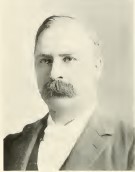 JOHN D.
ANDERSON, M. D., is the son of John Anderson, a retired
capitalist, born in Perth, Scotland, and one of the
pioneers of Ontario, Canada. John Anderson’s father, the
grandfather of the subject of this sketch, was a captain
in the British Army, who came to Canada in 1832, and in
about five hours after his arrival in Montreal, both he
and his wife died of Asiatic cholera. Their son, John
Anderson, survived them, and is now enjoying good health
at the advanced age of eighty-eight years. John
Anderson’s wife, Janet McLaren (Anderson), was born in
Calendar, Scotland. She came with her parents to
Ontario, Canada, in 1832, where her father was engaged
in the banking business and where she married John
Anderson. Their son, John D., the subject of this
sketch, was born June 29, 1855, in the county of
Victoria, Ontario. JOHN D.
ANDERSON, M. D., is the son of John Anderson, a retired
capitalist, born in Perth, Scotland, and one of the
pioneers of Ontario, Canada. John Anderson’s father, the
grandfather of the subject of this sketch, was a captain
in the British Army, who came to Canada in 1832, and in
about five hours after his arrival in Montreal, both he
and his wife died of Asiatic cholera. Their son, John
Anderson, survived them, and is now enjoying good health
at the advanced age of eighty-eight years. John
Anderson’s wife, Janet McLaren (Anderson), was born in
Calendar, Scotland. She came with her parents to
Ontario, Canada, in 1832, where her father was engaged
in the banking business and where she married John
Anderson. Their son, John D., the subject of this
sketch, was born June 29, 1855, in the county of
Victoria, Ontario.
He began his education in the
public schools and from there passed through the Oakwood
high school. Upon his graduation he received a teacher’s
certificate, without solicitation was appointed
assistant teacher in the high school in 1872, and in
that capacity earned his first dollar for professional
services. His inclination was toward the study and
practice of medicine and surgery, and in 1875 he entered
Trinity Medical School from which he graduated in 1879,
also from the medical department of Toronto University,
Trinity College and the College of Physicians and
Surgeons in the same year. After a few weeks rest at
home he sailed to Edinburgh, Scotland, where in May,
1879, he entered the Royal Infirmary and after a hard
summer’s study he passed the examination for licentiate
of the Royal College of Physicians. He had the honor of
being graded one hundred percent in both oral and
clinical examinations, and therefore stood at the head
of his class, which included graduates of all the
leading medical colleges in Europe.
Dr. Anderson has been a
resident of Minneapolis since January 12, 1883, where he
has built up a large and successful practice. He was an
active worker in the reform party in Ontario and since
his residence in the United States has affiliated with
the Republican party and is a staunch advocate of
Republican principles. He is a member of the British
Medical Association, the State Medical Association of
Minnesota, the Hennepin County Medical Association, and
is also a member of the Caledonian Society. His church
affiliations are with the Presbyterian denomination.
In
1881 Dr. Anderson married Mary Miller, daughter of Dr.
D. Gillespie Carmington, of Ontario. They came to this
city on account of her health, but the change did not
prove permanently beneficial and she died six months
after her arrival here. In January 1886, he married
Jessie C. MacGregor, eldest daughter of Mr. and Mrs. A.
MacGregor, of this city. She is a graduate of the
University of Minnesota.
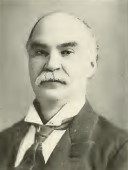 ALEXANDER THOMPSON ANKENY is of
German and French extraction on his father’s side, while
his maternal ancestry was English and Scotch.
The traditions of the family run back to the days
of the massacre of St. Bartholomew. The ancestors on his
father’s side were Huguenots, and some of them are said
to have suffered the loss of life and property. The
name, Ankeny, is supposed to have been derived from the
word Enghien, the name of what was originally a strip of
high-land in Flanders, the inhabitants of which were
known as sword-bearers to the reigning Duke. ALEXANDER THOMPSON ANKENY is of
German and French extraction on his father’s side, while
his maternal ancestry was English and Scotch.
The traditions of the family run back to the days
of the massacre of St. Bartholomew. The ancestors on his
father’s side were Huguenots, and some of them are said
to have suffered the loss of life and property. The
name, Ankeny, is supposed to have been derived from the
word Enghien, the name of what was originally a strip of
high-land in Flanders, the inhabitants of which were
known as sword-bearers to the reigning Duke.
The
earliest record of the family in this country begins
with the name of Dewalt Ankeny, who, about 1740, tired
of the religious wars of the old world, sought refuge in
the new settlement in Maryland, near Clear Springs,
Washington County. He became the owner there of some
eight hundred acres of land, portions of which are still
occupied by members of the family.
Among his seven sons, Peter Ankeny, the second,
was married in 1773 to Rosina Bonnet, daughter of John
Bonnet, who settled in Maryland about the same time.
This young couple set out with pack horses to explore
the new country, to the West, crossed the Allegheny
Mountains and located at what afterwards came to be
known as the Glades of Somerset,” Pennsylvania, Isaac
Ankeny, the fourth son of Peter, was married in 1820 to
Eleanor Parker, daughter of John Parker. He lived
continuously at Somerset, with the exception of a few
years in Ohio, until his death in 1853. He was a man of
influence anil an active spirit in the early development
of western Pennsylvania. His wife died in 1879.
They had four boys and six girls, six of whom are still
living.
The
subject of this sketch is the youngest son in that
family. He was born at Somerset, Pennsylvania, December
27, 1837. His early education was obtained at his native
town, and on the death of his father, in 1853, he was
sent to the Disciples’ College at Hiram, Ohio, where
President Garfield was then a tutor. In 1856 he attended
the Monongalia Academy at Morgantown, West Virginia,
then under the direction of Rev. J. R. Moore, Judge
William Mitchell, of Minnesota, was then one of the
instructors. From 1857 to 1858 he attended Jefferson
College, Cannonsburg, Pennsylvania, when he was offered
a position in the department of justice at Washington by
Hon. Jeremiah S. Black, the attorney general of the
United States. He remained until the close of Mr.
Buchanan’s administration having in the meantime
prepared himself for the practice of law. In April,
1861, he was admitted to the bar in his native town and
on the day Fort Sumter was fired upon tried and won his
first case. On July 4th, 1861, Mr. Ankeny delivered an
address at Somerset which attracted no little attention,
foreshadowing the severity of the struggle and its
ultimate outcome. When in the department of justice,
Edwin M. Stanton was connected with that department, and
in February, 1862, Mr. Stanton invited him to a position
in the war department which he filled with honor until
the close of the war. He sustained a confidential
relation to “the great war secretary,” and had knowledge
of most of the important movements in advance of their
execution. In April, 1865, he returned to the practice
of law at Somerset, where he was also connected with a
private bank. He was one of the promoters and treasurer
of the first railroad to Somerset.
In
1872 he became ambitious to enjoy the greater
opportunities afforded in the West and removed with his
family to Minneapolis, where, in partnership with his
brother, Willam P. Ankeny, he engaged in the lumber
business. This firm built the Galaxy flouring mill in
1874. On the death of his brother in 1877 he closed up
the business of his firm and returned to his law
practice. Mr. Ankeny has been an
active and public-spirited citizen of Minneapolis,
interested in every undertaking for the moral,
intellectual and material betterment of the city. In
1877 he was a member of the board of education for the
western division of the city, and in the following year
was one of the committee of ten who formulated the plan
for the complete union of the two divisions. He served
from 1878 to 1882 on the state board of equalization of
taxes. In 1886 he was again elected member of the
Minneapolis board of education, re-elected on both
tickets in 1889 and in 1890 was made president of the
board and ex-officio member of the library board, which
positions he held until January 1, 1895.
Mr.
Ankeny is a Democrat and exerts a large influence in the
councils of his party. In 1886 and 1887 he was president
of the Algonquin Democratic Club, of Minneapolis, and in
1886 to 1888 was a member of the state Democratic
central committee. In 1888 he was appointed on the
executive committee of the National Association of
Democratic Clubs, and still retains that position. In
1886 he incorporated in the state Democratic platform a
recommendation for the adoption of the Australian system
of voting, being the first public recognition of the
system in this country, and which is now used in nearly
all the states. Probably in no part of his public
services, however, has he taken more satisfaction than
in his work on the school board, where he has proved a
faithful and invaluable officer. He was active in the
passage of the free text book law of Minnesota, and in
placing the system in successful operation in
Minneapolis Some of Mr. Ankeny’s addresses on public
education are among the best contributions to the
literature of that subject. He was one of the
incorporators of the Masonic Temple Association, and a
member of the building committee which erected the
Masonic Temple. For several years he was vice-president
of its board of directors, and on the death of R. B.
Langdon was elected president of the board. This temple,
the South Side High School building, the Van Cleve and
Douglass school buildings, as well as the North Side
Public Library building, will long remain to testify to
his high conception of what such public structures
should be, whilst the economy practiced in construction
will be a witness to his integrity and fidelity. He is a
lawyer of high standing, and was made the Democratic
candidate for municipal judge in 1885 and for district
judge in 1890, but was not elected. In 1896 he received
the fusion nomination for mayor on the
Democratic-Populist ticket. His family are active
supporters of the Portland Avenue Church of Christ, of
Minneapolis. On May 1, 1861, he was married to Miss
Martha V. Moore, daughter of John Moore, of Wheeling,
West Virginia. They have a family of five children, all
now grown, three daughters being
married.
 ALEXANDER RUSSEL
ARCHIBALD Among the institutions founded for instruction
in special lines of education none have attracted more
students than those established to instruct young men
and women in the rudiments and principles of commercial
business. One of these institutions is the Archibald
Business College of Minneapolis, conducted by Alexander
Russel Archibald, a native of Nova Scotia. His father,
Matthew Archibald, was a farmer in moderate
circumstances in Halifax County. His mother’s maiden
name was Jane Grant, whose father was a native of
Scotland. The Archibald’s, however, were of English
descent. They located originally in Londonderry, New
Hampshire, and afterwards removed to Nova Scotia.
Many of them attained to honorable positions in
the gift of the people of that country, such as the
governorship, membership in the people’s parliament,
etc. A brother of Alexander was a member of the people’s
parliament for the city of Halifax for several terms,
and has now a life position as sheriff in that city. ALEXANDER RUSSEL
ARCHIBALD Among the institutions founded for instruction
in special lines of education none have attracted more
students than those established to instruct young men
and women in the rudiments and principles of commercial
business. One of these institutions is the Archibald
Business College of Minneapolis, conducted by Alexander
Russel Archibald, a native of Nova Scotia. His father,
Matthew Archibald, was a farmer in moderate
circumstances in Halifax County. His mother’s maiden
name was Jane Grant, whose father was a native of
Scotland. The Archibald’s, however, were of English
descent. They located originally in Londonderry, New
Hampshire, and afterwards removed to Nova Scotia.
Many of them attained to honorable positions in
the gift of the people of that country, such as the
governorship, membership in the people’s parliament,
etc. A brother of Alexander was a member of the people’s
parliament for the city of Halifax for several terms,
and has now a life position as sheriff in that city.
The
subject of this sketch was born July 27, 1847, in
Musquodoboit, Halifax County, Nova Scotia. His early
education was obtained in the common schools where only
the ordinary rudimentary branches were taught. Later he
attended and graduated at Kimball Union Academy, in New
Hampshire. He was there honored
with the presidency of his class and selected to give
the parting address. From the academy he
went to Dartmouth College. Being possessed of limited
means he was obliged to teach school part of the time in
order to pay his expenses, and yet his rank in his class
was among the first three all through the four years. He
also competed for and gained the oratorical prize. While
in college he was a member of the Theta Delta Chi
fraternity anil represented that society as a delegate
to its national convention in New York in 1873.
He
was graduated in 1873 with a degree of M.A., and in
September of the same year he came to Minnesota and
located at Glencoe, as principal of Stevens Seminary. He
remained there through the school year of 1876 and ‘77,
but in the latter year came to Minneapolis and founded
the Archibald Business College, an institution whose
graduates occupy many positions of trust in the
Northwest. Mr. Archibald was married in August, 1877, at
Glencoe, to Miss Sarah Jane Appleton.
They have one child, George S., now in his
fifteenth year. Mr. Archibald recalls among his early
experiences that he earned his first dollar while
working in a hay field on a Nova Scotia farm. Mr.
Archibald is a Republican in politics. He has always
voted that ticket and is a substantial supporter of the
Republican party. He has never held any political office
of his own, but as a delegate to local and general
conventions has assisted in securing political honors
for his friends, many of whom have reason to remember
his action in the premises with gratitude.
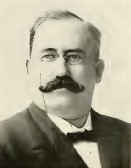 JOHN W. ARCTANDER
is a native of Stockholm, Sweden, where he was born in
1849. On his father’s side he is descended from one of
Norway’s oldest families, prominent for several hundred
years in Norwegian history, while on his mother’s side
he is closely related to the Nobels, of St. Petersburg
and Paris, who are the petroleum kings of Europe, and,
perhaps, next to the Rothschilds, the wealthiest family
in the world. JOHN W. ARCTANDER
is a native of Stockholm, Sweden, where he was born in
1849. On his father’s side he is descended from one of
Norway’s oldest families, prominent for several hundred
years in Norwegian history, while on his mother’s side
he is closely related to the Nobels, of St. Petersburg
and Paris, who are the petroleum kings of Europe, and,
perhaps, next to the Rothschilds, the wealthiest family
in the world.
Mr.
Arctander graduated with first honors from the Royal
University of Norway in 1867. He had already gained a
considerable name by his contributions to Norwegian
literature, and after his graduation he became
associated with the celebrated Norwegian poet,
Bjornstierne Bjornson in journalistic enterprises and
occupied a prominent position in the newspaper world of
Norway. He was very radical in his political tendencies
and the vigorous expression of his views soon brought
him into conflict with the authorities so that in 1870
he became a political exile from his own country.
Naturally the great republic of America attracted
him and became his adopted country.
From
1870 to 1874 he was connected with Norwegian papers in
Chicago and New York, but during this time
simultaneously pursued the study of law. In 1874 he came
to Minnesota and shortly afterwards was admitted to
practice as an attorney. He first settled in
Minneapolis, but two years later moved to Willmar and
for ten years devoted himself mainly to criminal
practice. He built up quite a reputation in the western
part of the state as a criminal lawyer, and in 1880 was
by Governor Pillsbury appointed district attorney of the
Twelfth judicial district, especially created by the
legislature, and afterwards was elected to the position
by the people. While for four years prior to this only
one person had been convicted of crime in the entire
district. Mr. Arctander during the first year of his
incumbency of the office of district attorney sent forty
criminals to the state prison.
Terror reigned among the criminal classes which
had infested the border counties of the state and the
effect was wholesome and gratifying.
In 1881 he was engaged as counsel for the defense
in the impeachment trial of Hon. E. St.
Julien Cox, and added considerable to his
reputation by the able manner in which he presented the
cause of his client.
In
1885 Mr. Arctander was made a member of the commission
which drafted the present penal code of the state of
Minnesota, the commission having the satisfaction of
seeing their work adopted by the legislature without a
single amendment. In 1886 Mr. Arctander removed to
Minneapolis where he has since occupied a prominent
place among the members of the bar. In 1875 he wrote a
practical hand book of the laws of Minnesota in the
Norwegian language, which had a large sale. In 1895 he
published a new edition in the same language and
re-wrote it in Swedish. In 1893 he translated into
English Henry Ibsen’s ‘”The blaster Guilder.” Mr.
Arctander has also indulged in his taste for literature
in numerous contributions to periodical publications,
and it is understood that he has in preparation a work
somewhat more ambitious than anything he has yet
published, but is not yet ready to announce
it.
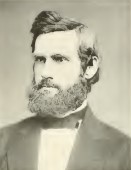 HORACE AUSTIN the
sixth governor of Minnesota, was born October 15, 1831,
at Canterbury, Connecticut, the son of a well-to-do
farmer. After finishing his education in an academy at
Litchfield, Maine, he taught at Belgrade Academy, in the
same state, of which institution he was principal for a
short time. He studied law at Augusta, Maine, in the
office of Lot M. Morrill, afterwards United States
senator, and in 1856, at the age of twenty-five, came to
Minnesota, locating at St.
Peter. HORACE AUSTIN the
sixth governor of Minnesota, was born October 15, 1831,
at Canterbury, Connecticut, the son of a well-to-do
farmer. After finishing his education in an academy at
Litchfield, Maine, he taught at Belgrade Academy, in the
same state, of which institution he was principal for a
short time. He studied law at Augusta, Maine, in the
office of Lot M. Morrill, afterwards United States
senator, and in 1856, at the age of twenty-five, came to
Minnesota, locating at St.
Peter.
In
1862 he enlisted as a lieutenant and was promoted to
captain of cavalry, taking an active part in the Sibley
campaign against the Indians on the Missouri. The year
following he was elected judge of the Sixth Judicial
District. His advancement was
rapid after this, and in 1869 he was elected governor by
about two thousand majority. A glance at his inaugural
address will give some idea of the man and of the
condition of the state in this early day. He reviewed
many of the questions then agitating the people, some of
which lived into the next decade, while others are still
pressing for solution, and his advice was always sound
and timely. He advocated the revision of the criminal
code, which was so intricate, even in that day, as often
to lead to injustice. He advocated the improvement of
the Duluth harbor, and saw very clearly the future
importance of Duluth as a shipping point for the
products of the Northwest.
He
was opposed to excessive special legislation, which in
those days frequently crowded out more important
legislation of general interest. He recommended that
state and federal elections should come in the same
year. In the early seventies
the people of Minnesota enjoyed the luxury of an
election every year. He suggested a convention to
prepare a new state constitution, believing the original
constitution to be no longer suited to the needs of the
people. That old constitution,
however, is still the supreme law of the state, and the
failure to secure a constitutional convention in 1871
was repeated in 1896. The internal improvement lands
previously granted to the state by congress had not been
set apart for public use at the time of Governor
Austin’s election, and the legislature of 1871
apportioned them among a number of railroad
corporations. Governor Austin
promptly vetoed the bill, which led to an amendment to
the constitution prohibiting the legislature from
appropriating the proceeds arising from the sale of
these lands unless consent was first given by the people
at the polls. After serving for two years with honor to
himself and credit to the state, Governor Austin was
re-elected in 1871 by sixteen thousand majority. In his
inaugural message of 1872 he made a strong appeal for
biennial sessions of the legislature, an appeal to which
the future was not slow to respond. Shortly after his
second term as governor Mr. Austin became third auditor
of the United States treasury, a position which he
filled under Secretaries Bristow, Morrill and
Sherman. Following this he was
for seven years in the department of the interior, and
subsequently he was a member of the Minnesota railroad
and warehouse commission. He is at this time engaged in
the practice of law in the city of Minneapolis.
He is a member of the Loyal Legion. Mr.
Austin was married in March 1859 to Miss Mary
Lena Morrill, of Augusta, Maine. Of six children, one
son and five daughters, all are living save one
daughter.
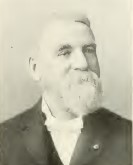 E. C. BABB was
born in the village of Saccarappa, near the city of
Portland, Maine, on February 1, 1834. His ancestors are
descendants of old New England families, his mother,
Mary Winslow, tracing her descent from Governor Winslow,
of Massachusetts. E. C. BABB was
born in the village of Saccarappa, near the city of
Portland, Maine, on February 1, 1834. His ancestors are
descendants of old New England families, his mother,
Mary Winslow, tracing her descent from Governor Winslow,
of Massachusetts.
Captain Babb received a good common
school education in his native town, and, after teaching
school for a while, learned the trade of a marble
cutter. From the age of twenty-one to twenty-eight he
was engaged in lumbering in northern Vermont and New
Hampshire. It was while he was in this business that the
war broke out, and he enlisted in the Ninth Regiment,
New Hampshire Volunteer infantry. He participated in the
battles of Bull Run (two). South Mountain, Antietam and
Fredericksburg. In the latter he displayed such
gallantry that he was promoted over six first sergeants
to the rank of second lieutenant. After Fredericksburg
Captain Babb’s regiment was sent west, and participated
in the siege of Vicksburg.
Later his regiment was detailed for service in
Kentucky, and in 1863 and 1864 Lieutenant Babb served as
staff officer during the campaign in East Tennessee.
Here he received his commission as first-lieutenant. The
following spring found him at Annapolis with his
regiment where preparations were making for the final
campaign under General Grant. He was in the battles of
the Wilderness, Spotsylvania, Cold Harbor, and all the
battles about Petersburg until the final surrender. He
was commissioned captain in January, 1865. On June 10,
of the same year, he was mustered out of service at
Concord, New Hampshire.
Captain Babb came to Minneapolis in
1868. After a few years in the lumber business he became
president of the Cedar Lake Ice Company, an office which
he still holds. He has been a distinguished member of
the Grand Army of the Republic, and has held the
position of Commander of the Minnesota department. He is
an esteemed member of the Loyal Legion, and is also a
Mason and a Knights Templar. He became a Knights Templar
in 1868, and is a member of the Zion Commandry, No. 4,
of Minneapolis. In 18S5 and 1886
Captain Babb represented the Eighth ward in the city
council. In 1888 he was elected mayor. During his term
of service as mayor occurred the great street railway
strike, which called for the exercise of the soldierly
qualities which the war had developed in the city’s
executive. Captain Babb was married on August 15, 1862,
to Levee L. Chandler at Berlin Falls, New
Hampshire.
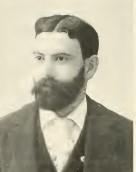 WALTER LOUIS BADGER
is a native of Wisconsin. He was born at Fond du
Lac, May 27, 1868, the son of George A. Badger, for
years a successful merchant in that city, and Harriet
E. Hastings (Badger.) both
parents came from good New England stock, and were
natives of Massachusetts. WALTER LOUIS BADGER
is a native of Wisconsin. He was born at Fond du
Lac, May 27, 1868, the son of George A. Badger, for
years a successful merchant in that city, and Harriet
E. Hastings (Badger.) both
parents came from good New England stock, and were
natives of Massachusetts.
Walter Louis attended the public
schools until he was fourteen. when, ambitious to earn
money to get into business, he left school. In the
meantime his parents had moved, in 1878 to .Minneapolis
and when Walter began to look for opportunities to earn
money, one of the first things which presented itself
was employment in the office at the Fair Grounds, when
the fair was known as “Bill King’s Show.”
He
began his business career in the real estate office of
J. Goldsbury, and continued there until going into
business for himself in 1886, in the saine line of
trade. In 1890 he became a special partner of the firm
of Corser & Co., and remained with that firm three
years. He then withdrew and resumed the business alone
in the New York Life Building, where he built up a good
business and has charge of a number of large estates,
including the real estate business of the Northern Trust
Company, and some other prominent corporations.
Mr.
Badger is a Republican, although he has never taken a
very active part in party matters.
His principal interest in politics relates to
municipal affairs, and he is an active promoter of
municipal reform. He is a member of the Commercial Club
of Minneapolis, the Royal Arcanum, a director of the
Board of Trade, and also of the Northern Trust Company.
He is an active member of Plymouth Church, and has been
for a number of years treasurer of the Sunday school. He
was married in 1890 to Miss Anna Dawson, of Keokuk,
Iowa. They have two children, Lester Roberts and Norman
Dawson, aged four and two years,
respectively.
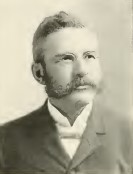 ISAAC ALBERT BARNES
is a native of New Bedford, Massachusetts, and traces
his ancestry back to the early settlement of the
country. His father, Isaac Barnes, Jr., and his mother,
Emily Weston (Barnes), were both born at Plymouth,
Massachusetts, and moved to New Bedford about 1850. The
family line is easily traced back to John Barnes, who
settled in Plymouth in 1632, twelve years after the town
was founded. Isaac Barnes, great-grandfather of the
subject of this sketch, was a soldier in the
Revolutionary war. ISAAC ALBERT BARNES
is a native of New Bedford, Massachusetts, and traces
his ancestry back to the early settlement of the
country. His father, Isaac Barnes, Jr., and his mother,
Emily Weston (Barnes), were both born at Plymouth,
Massachusetts, and moved to New Bedford about 1850. The
family line is easily traced back to John Barnes, who
settled in Plymouth in 1632, twelve years after the town
was founded. Isaac Barnes, great-grandfather of the
subject of this sketch, was a soldier in the
Revolutionary war.
Isaac
Albert Barnes was born in New Bedford, September 7,
1852. His family were people of moderate circumstances,
and although eager to obtain an education he was denied
the advantages of college training. He attended the
public schools and a private school at New Bedford, and
gained experience and self-reliance, as many other
successful men have, as a little street merchant selling
newspapers and apples. But he had determined to be a
lawyer, and finally succeeded in entering the Albany law
school, where he graduated in 1877. He also read law in
the office of Barney & Knowlton, of New Bedford,
Massachusetts, and was admitted to the bar of that state
from their office. This firm was among the leading
members of the Eastern bar, Mr. Barney having been for a
number of years associated with Ben Butler, while Mr.
Knowlton is now attorney general of Massachusetts. Mr.
Barnes also practiced law in Boston for a time and March
10, 1882, came to Minneapolis in search of a wider and
more promising field for a young attorney.
He
was induced to select Minneapolis as his home through a
previous family acquaintance with the late Judge John
M. Berry. Since his
arrival here he has been engaged in the practice of law,
and has also made considerable investment in real
estate. He was interested in platting and selling
Barnes” addition to the city of Minneapolis, Barnes”
re-arrangement of Wright’s addition, Barnes” subdivision
in Layman’s addition, Coplin’s re-arrangement and Cole
and Weeks” rearrangement. Mr. Barnes is a Republican,
and while he has never held any public office, has
always taken an active interest in public affairs. He is
a member of the Congregational Club of Minnesota: was
twice a member of the executive committee. He is a
member of the Commercial Chili of Minneapolis and of
Plymouth Congregational church September 7, 1886, he was
married to Lizzie L. Wilson. daughter of Hon. Hudson
Wilson, of Faribault, Minn. They have three children
living. Harriet W., Katherine and Sarah Elizabeth. Mr.
Barnes has a pleasant home on Stevens avenue and he and
Mrs. Barnes enjoy the society and friendship of a large
circle of cultivated people.
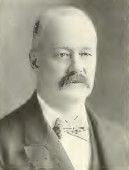 CHARLES
JOHN BARTLESON was born April 3, 1844, at Macomb,
Illinois, the son of Charles Mahelm Bartleson, of German
descent, and Mary Ann Airey (Bartleson), of an old
English Quaker family, whom Charles Mahelm married at
Liverpool. Charles M. spent many
years in successful navigation as the commander of a
packet ship. Mrs. Bartleson sailed
with her husband for several years, their home meanwhile
being established at Philadelphia. In 1837 Captain
Bartleson determined to quit the sea, and removed to the
far West, settling at Macomb, Illinois. CHARLES
JOHN BARTLESON was born April 3, 1844, at Macomb,
Illinois, the son of Charles Mahelm Bartleson, of German
descent, and Mary Ann Airey (Bartleson), of an old
English Quaker family, whom Charles Mahelm married at
Liverpool. Charles M. spent many
years in successful navigation as the commander of a
packet ship. Mrs. Bartleson sailed
with her husband for several years, their home meanwhile
being established at Philadelphia. In 1837 Captain
Bartleson determined to quit the sea, and removed to the
far West, settling at Macomb, Illinois.
Here
Charles J. Bartleson was educated in the public schools
and in the old McDonough College, then an institution of
some note. In 1861 he enlisted in the Second Illinois
Cavalry and served with the Western army in Grant’s
campaigns up to the siege and surrender of Vicksburg,
when he went with his command to the Department of the
Gulf and served with General Banks in his Red River
campaign. Mr. Bartleson was slightly wounded at
Vermillion Bayou, Louisiana, but boasts that his three
years of rough riding in the army was the making of him
physically.
At
the close of the war Mr. Bartleson began the study of
law in the office of John S. Thompson, at Aledo,
Illinois. He was admitted to the
bar in April, 1867. He then practiced his profession in
that city for five years in connection with his
preceptor, Judge Thompson, at which time he removed to
Minneapolis, and has since been engaged in the practice
of law at this point. While not desiring to be regarded
as a specialist, he has been chiefly interested in the
law and litigation pertaining to real estate, in which
he is considered well equipped, especially with
reference to the decisions of our own courts bearing
upon that branch of the law. Mr. Bartleson is not a
promoter of litigation. On the other hand he takes more
pride in so advising his clients in the conduct of their
business as to avoid unnecessary controversy than in
litigation of causes, and consequently is commonly on
the defense’s and less frequently in court.
In
politics Mr. Bartleson is a Democrat. He has, however,
never held a political office and has no aspirations in
that direction. He is a member of the Minneapolis Club,
the Commercial Club, the Minnetonka Yacht Club and the
G. A. R. He was married May 9, 1871, to Harriet Newell
Wright, and has three daughters and one son. Mabel,
Blanche, Maud and Charles Albert.
 JOHN THOMAS BAXTER is
a lawyer practicing his profession at Minneapolis. His
father, Thomas Baxter, was a miller, and was engaged in
that business at Bangor, Wisconsin, at the time of his
death in 1875. His mother’s maiden name was Susannah
Lewis. JOHN THOMAS BAXTER is
a lawyer practicing his profession at Minneapolis. His
father, Thomas Baxter, was a miller, and was engaged in
that business at Bangor, Wisconsin, at the time of his
death in 1875. His mother’s maiden name was Susannah
Lewis.
The
subject of this sketch was born at Berlin, Wisconsin,
October 14, 1863. He began his education
in the common schools and attended the high school at
West Salem, Wisconsin, walking back and forth, the
distance of five miles, each day. In this way he made
his preparation for college. He began his college course
at Ripon where he continued for three years. During his
stay at Ripon college he earned his living as express
messenger for the American Express Company, having a
“night run,” which took him away from home in the
evening, brought him back in the morning, and thus
enabled him to attend the college exercises in the day
time. Mr. Baxter excels as a speaker, and represented
his college in the Wisconsin state oratorical contest in
his junior year. He took the first honors, and, there—
fore, represented Wisconsin in the interstate oratorical
contest, held at Iowa City, in the spring of 1884. The
same year he was elected president of the Wisconsin
Collegiate Association. The course of study pursued by
him was the classical. including Greek. At the
end of his junior year he decided to drop out of college
for a year and then finish his course at Williams
College, to which he was attracted by the celebrated
Dr. Mark Hopkins. He
entered the junior class at Williams in 1885, and while
there he was a member of the Delta Upsilon fraternity,
which was the oldest college society at that
institution, and the chapter to which Garfield had
belonged. He was elected editor of the Williams Literary
Monthly, and received the first junior prize in
oratory. In his senior year he
won the Graves prize for an essay on “The New Political
Economy.” At graduation he was awarded the Van Vechten
prize, given at each commencement to that member of the
graduating class, who, by a vote of the faculty and
students, is declared the best extempore speaker of the
class. This distinction was won in a class of sixty-six
members. But the incident of his college course which
possesses the most interest for Mr. Baxter, was the fact
that he was the last student who ever recited under the
venerable Dr. Mark Hopkins. It was a recitation in moral
philosophy. Dr. Hopkins died just before the
commencement at which Mr. Baxter graduated.
Mr.
Baxter came to Minneapolis in 1887, and began the study
of law with Kitchel, Cohen & Shaw, and was admitted
to the bar in 1889. He has been in active practice since
1890, and has been the secretary of the Minneapolis Bar
Association since February, 1892. In politics he is a
Republican, but is independent enough to vote for
measures and men without much regard for party
lines. He is a member of Park
Avenue Congregational church. October 14, 1891 he
married Gertrude Louise Hooker, daughter of William
Hooker, of Minneapolis, and niece of the late Judge
Hooker. They have two daughters, Beth and Helen.
 HENRY BEEMER of
Minneapolis, is a son of Joseph Beemer, a well-to-do
farmer, and Elizabeth Dean (Beemer.) Joseph Beemer
resided at St. George, Ontario, and, while not a
politician, in the usual sense of the word, he was
chosen by his fellow-townsmen fifteen times in
succession to represent them in the council. HENRY BEEMER of
Minneapolis, is a son of Joseph Beemer, a well-to-do
farmer, and Elizabeth Dean (Beemer.) Joseph Beemer
resided at St. George, Ontario, and, while not a
politician, in the usual sense of the word, he was
chosen by his fellow-townsmen fifteen times in
succession to represent them in the council.
Henry
Beemer was born at St. George, November 5, 1836. His
educational advantages were confined to the town
schools, as in those days very few farmers’ boys in that
country were able to enjoy the advantages of a college
course. In 1860 Mr. Beemer removed to Michigan, locating
at Pontiac, and went into the marble business He
continued in that business there until 1881, when he
moved his establishment to Clinton, Iowa, and a short
time later to Lisbon. He continued in the marble
business in Iowa for nineteen years, making twenty-one
years in all engaged in that line of trade, during which
time he was very successful. In 1881 he closed up his
marble business and turned his attention to life
insurance. The following year he organized the
Northwestern Aid Association at Marshalltown, Iowa, and
three years later, in 1885, moved the headquarters of
that association to Minneapolis and changed the name to
the Northwestern Life Association. He incorporated under
the laws of Minnesota, and for the past ten years has
acted as general manager. He was mainly instrumental in
placing it in the favorable position which it now
occupies.
Since
his removal to Minneapolis he has also become deeply
interested in agriculture, and in 1893 he fitted up a
farm near Excelsior. The tract contained two hundred
acres, and Mr. Beemer took great satisfaction in
bringing it into a high state of cultivation and
improvement. Mr. Beemer has never taken a very active
part in politics, but is an enthusiastic Republican. In
1894 some of his friends took the liberty to present his
name to the Republican city convention for the office of
mayor, and although he was not an active candidate, he
received seventy-six votes on the first ballot. Mr.
Beemer is a member of the Methodist Episcopal Church,
and was elected one of two delegates to the general
conference in 1892. He has been entrusted with all the
offices of his church from the lowest to the highest,
and is now chairman of the finance committee of the
Wesley M. E. Church, of Minneapolis. He is a man of
sterling integrity and commands the confidence and
respect of all who know him. He was married in 1857 to
Nancy A. Averill, and they have had four children,
Herbert Elsten, Marie Lucretia, Helena Augusta and
Dayton. The first two are not
living.
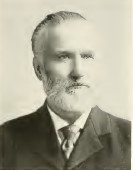 HENRY
C. BELDEN is one of the judges of the district court of
Hennepin County. He is a son of Haynes W. Belden and
Lydia P. Blake (Belden.) His father was a farmer in poor
circumstances in Vermont. His father’s ancestry was
English and was among the early settlers of
Connecticut. His mother’s family was
Scotch, and among the earlier settlers in New
Hampshire. HENRY
C. BELDEN is one of the judges of the district court of
Hennepin County. He is a son of Haynes W. Belden and
Lydia P. Blake (Belden.) His father was a farmer in poor
circumstances in Vermont. His father’s ancestry was
English and was among the early settlers of
Connecticut. His mother’s family was
Scotch, and among the earlier settlers in New
Hampshire.
Henry
C. Belden was born at Burke, Caledonia County, Vermont,
on August 30th, 1841. The financial circumstances of his
family were such that he could not have the advantages
of college training. His early education was confined to
the common schools and the village academy. Henry C.
Belden has, however, not depended upon teachers and the
class room for an incentive to study. He is widely read,
and general scientific studies have been his favorites.
He had not, however, neglected the study of politics and
current economic questions.
He
began the study of law in the office of Hon. Thomas
Bartlett at Lyndon, Vermont, where he remained from 1861
to April, 1864. He was then admitted to the bar and
began the practice of law at Lyndon. Subsequently he
removed to St. Johnsbury, Vermont, where he remained
until December, 1884, he there formed a partnership in
1873, the name of the firm being Belden & Ide. This
firm did a very extensive business and was one of the
strongest law firms in the state. Mr. Belden has always
been a Republican and served the people of Caledonia
County, Vermont, as their representative in the state
senate for two terms, from 1876 to 1880. He was also
made a delegate to the National Republican Convention at
Chicago in 1880 and voted for the nomination of
Garfield.
In
December, 1884 he removed to Minneapolis, where he
formed a partnership with John B. Gilfillan and C. A.
Willard. and continued the
practice of his profession with great success. Judge
Belden had never taken a very active part in Minnesota
politics until 1894, when he was nominated by the
Republicans to the office of district judge, and was
elected. He owes his choice for the nomination to his
recognized ability as a lawyer and to the reputation
which he maintains as a gentleman of high character and
sterling integrity. Judge Belden is a member of the
Minneapolis Club, is a gentleman of broad and liberal
views, and possesses those qualities which constitute in
largest measure the equipment of a wise and successful
judge. He is not a member of any church, as he regards
church creeds too narrow to fit his ideas of
religion. He is, however, a man
of upright life, and highly honored in the community. He
was married April, 1865, to Carrie H. Kimball. They have
five children. Mary, George, Helen, Agnes and
Harry.
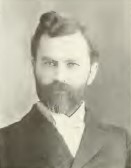 GEORGE DOUGLAS
BLACK is a minister of the gospel and pastor of the Park
Avenue Congregational church, in Minneapolis. He was
born in Knox County, Ohio, February 12, 1858.
His ancestry was German on his father’s side, and
on his mother’s Scotch and French. His home was in Mt.
Vernon, the county seat of Knox county, until he was
thirteen years old. There he attended the public
schools, but at the age of thirteen, went with his
parents to live on a farm in the same county. GEORGE DOUGLAS
BLACK is a minister of the gospel and pastor of the Park
Avenue Congregational church, in Minneapolis. He was
born in Knox County, Ohio, February 12, 1858.
His ancestry was German on his father’s side, and
on his mother’s Scotch and French. His home was in Mt.
Vernon, the county seat of Knox county, until he was
thirteen years old. There he attended the public
schools, but at the age of thirteen, went with his
parents to live on a farm in the same county.
Having decided to make the Christian
ministry his calling, he studied literature and theology
from 1876 to 1880 with Rev.
J. W. Marvin, of Knox County, a man of great
ability and of unique magnetic influence over young men.
Mr. Black says of this incident in his life: “I have
never ceased to be grateful for the years of inspiration
and intimacy spent with Mr.
Marvin. After the blessing of a devout father and
mother, no good has come to me in this world equal to
the friendship and instruction of this man. I can say of
him what Garfield said of Mark Hopkins, my conception of
a university is a log with a student at one end of it
and Marvin at the other. To feed on such a life is an
unspeakable good to any young man.”
Having prepared for the ministry, Mr.
Black’s first important charge was at the college town
of Yellow Springs, Ohio. He had two pastorates there,
and impressed himself with special force upon the young
men of the college. One of them published a sketch in
which he said of Mr. Black: “He was only twenty-six. He
came to talk Sunday after Sunday to college men and
women, and before hearing him I wondered at his
presumption. I felt then as I feel now, that a preacher
should also be a teacher, rounded out on all sides; a
spiritual and intellectual leader. Among the students he
should be able not only to deepen their faith, but to
solve their doubts. There was a dignity in this man’s
bearing, in the richness of his tone that charmed me
from the first. As the Sundays went by the charm
deepened. I felt sure that God meant him for a preacher.
Somewhere he had learned the best and highest things a
college can teach—he had learned to be a student.
Somewhere, too, he had learned that deeper
lesson, what it is to live with God. Although he had
spent most of his time on a farm, began preaching at
eighteen and prepared for his life work while doing it,
he came among us familiar with the best authors and able
to interpret them to us in the choicest language. This
farm lad under the sun and stars had felt the immensity
of the universe and the greatness of the soul through
which it speaks. This young man was George Douglas
Black.”
Mr.
Black resigned his pulpit in Yellow Springs in 1892, to
accept the editorship of the Herald of Gospel Liberty,
the organ of the Christian denomination, published at
Dayton, Ohio. It was while he was thus engaged that
Dr. Washington Gladden
visited Minneapolis in January, 1893, and was asked by
the committee of Park Avenue Congregational church to
recommend some one for their vacant pulpit. Dr. Gladden
recommended Mr. Black. He came by invitation, preached
one Sunday, was called to the pastorate and entered upon
his work within a few weeks.
Since
coming to Minneapolis he has been associated for nearly
two years with B. Fay Mills, President George A. Gates,
Prof. George D. Herron, Thomas C. Hall,
Prof. John Bascom and others in the editorship of The
Kingdom, a weekly religious newspaper, published in
Minneapolis. Mr. Black has
contributed to the Golden Rule, the Outlook, the New
England Magazine and other publications, and is in
demand as a lecturer before college societies and other
literary bodies. He was married in 1879 to Miss Flora
Bell Hanger, daughter of Rev. Andrew C.
Hanger, minister of the Christian church in
Ohio. They have three
children, Georgia Eva, Wendell Marvin and Russell
Collins.
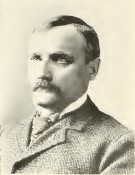 JAMES H. BRADISH
comes of an old Massachusetts family which traces its
line back to the early Colonial times. His father, Cyrus
Bradish, was born in Haverhill, New Hampshire, in 1814.
His mother, whose maiden name was Hannah Bachelder, was
a native of the same place. Soon after their marriage,
Cyrus Bradish and his wife moved to Cabot, Vermont,
where .Mr. Bradish engaged in farming. JAMES H. BRADISH
comes of an old Massachusetts family which traces its
line back to the early Colonial times. His father, Cyrus
Bradish, was born in Haverhill, New Hampshire, in 1814.
His mother, whose maiden name was Hannah Bachelder, was
a native of the same place. Soon after their marriage,
Cyrus Bradish and his wife moved to Cabot, Vermont,
where .Mr. Bradish engaged in farming.
Their
son James, was one of six children. He came West with
some of his brothers in 1862, settling at Menasha,
Wisconsin. Though only sixteen years old he entered the
army with his brothers, serving for a time as captain’s
clerk. Later in the war he enlisted as a regular private
and served until August 30, 1865, when he was mustered
out. His regiment went through the Atlanta campaign and
participated in Sherman’s great march to the sea. Mr.
Bradish was wounded at Resaca, on May 14, 1864.
Immediately on being mustered out of
the army Mr. Bradish entered Ripon
College, and after a six years course, graduated in
1871. He then entered Columbia College law school in New
York City. and after two years graduated with the degree
of LL. B. He at once begun the practice of law at Ripon,
Wisconsin. After about two years Mr. Bradish came to
Minneapolis and became associated with the Honorable C.
M. Pond, now judge of the District Court. This
partnership terminated after a time but Mr. Bradish has
continued in active practice. In the spring of 1892 he
was appointed assistant general solicitor of the
Minneapolis, St. Paul & Sault Ste. Marie Railroad
Company. Since coming to Minneapolis Mr.
Bradish has taken a very active part in
politics. In 1888 he was elected
alderman from the Ninth ward, for a term of four years,
and was re-elected after a most vigorous contest in
1892. In the council Mr. Bradish has taken a particular
interest in the patrol limits law of Minneapolis.
One of his achievements in the council was that
of securing the bridging of the Great Northern Railway
tracks, at the street crossings on the East Side. He is
chairman of the council committee on roads and bridges.
Mr. Bradish became a member of the park board in
1891.
On
October 1, 1874, Mr. Bradish married a college
class-mate. Miss Sarah H. Powers, a daughter of Moses H.
Powers, of Green Lake, Wisconsin. Mrs. Bradish graduated
in the classical course at Ripon College, traveled
extensively in Europe and is a lady of highest
culture. They have two children,
Bertha and Herman. Herman is now senior in the High
School, Bertha organist at Pilgrim Church, and a fine
musician.
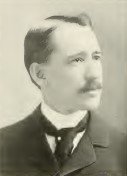 CHARLES WILLIAM BROWN Captain
Brown, as he is generally addressed by his acquaintances
in Minneapolis, acquired his title while in command of
an American vessel engaged in trade in Australia, India
and China. CHARLES WILLIAM BROWN Captain
Brown, as he is generally addressed by his acquaintances
in Minneapolis, acquired his title while in command of
an American vessel engaged in trade in Australia, India
and China.
Mr. Brown was born in
Newburyport, Massachusetts, June 14, 1858. His father
was Jacob B. Brown, who was for many years a well known
shipmaster of New England, and directly descended from
John Brown, who settled in Rockingham County, New
Hampshire in 1644. The farm occupied and improved by him
is still owned by his descendants.
Captain Brown’s mother’s maiden name was Anna A.
Fitch. Her ancestors settled Fitchburg, Massachusetts,
but, being loyal to the crown at the time of the
Revolution, they emigrated to Nova Scotia, leaving
considerable property behind them.
Charles William began his education
at Allen’s English and Classical School at West Newton,
Massachusetts, continuing it in Drummer Academy at
Byfield, and graduating at Newburyport high school.
Following the custom among New England boys he went to
sea at an early age, and was some time in the service of
the Chinese Merchants Steam Navigation Company on the
coast of China. At the age of twenty-one he had attained
such proficiency as a sailor that he was placed in
command of the American barque Agate, and sailed for
Adelaide, Australia. He continued for
several years in that capacity, trading mostly with
Australia, India and Japan.
In
November, 1885 having left the sea and being attracted
by the reputation of Minneapolis, he made a short visit
to this city, and was so pleased with the business
opportunities offered and the desirability of the city
as a place of residence, that he associated himself with
L. W. Young, and established the first stained glass
manufacturing business in the Northwest. In April of the
following year the firm became Brown & Haywood.
Business continued to grow and included the
handling of plate and window glass. In 1891 the firm of
Brown & Haywood Company was incorporated with C. W.
Brown as treasurer and general manager. The enterprise
has been highly successful and has grown to very
handsome proportions. While not taking any
active part in politics. Captain Brown has been
identified with the Republican party, reserving to
himself, however, the right at any time to vote for the
best man and the best policy, regardless of party
lines. At present Captain
Brown is president of the Jobbers’ and Manufacturers’
Association of Minneapolis.
He
was married October 31, 1883, to Alice Greenleaf, of
Newburyport, Massachusetts.
They have five children. Although Captain Brown
has retired to the less eventful and exciting occupation
of a merchant and manufacturer, he has not lost his
interest in the sea, nor forgotten the pleasures and
enjoyments of that adventurous
life.
 FREDERICK
VANESS BROWN is of New England ancestry on his father’s
side. The earliest member of the family known to the
family records was John Brown, who came to Massachusetts
Bay colony in the ship Lyon in 1632.
His descendant, William Brown, and the great
grandfather of the subject of this sketch, was a soldier
in the War of the Revolution. Frederick V. is a son of
Orestus S. Brown, who resides at Shakopee, Minnesota.
Orestus came to Minnesota from Michigan in 1869, and is
a farmer in comfortable circumstances. His wife, Eveyln
Bortle (Brown), mother of Frederick Vaness, died at
Shakopee, March 8, 1871. FREDERICK
VANESS BROWN is of New England ancestry on his father’s
side. The earliest member of the family known to the
family records was John Brown, who came to Massachusetts
Bay colony in the ship Lyon in 1632.
His descendant, William Brown, and the great
grandfather of the subject of this sketch, was a soldier
in the War of the Revolution. Frederick V. is a son of
Orestus S. Brown, who resides at Shakopee, Minnesota.
Orestus came to Minnesota from Michigan in 1869, and is
a farmer in comfortable circumstances. His wife, Eveyln
Bortle (Brown), mother of Frederick Vaness, died at
Shakopee, March 8, 1871.
Frederick V.
was born in Washtenaw County, Michigan, March 8,
1862, and was seven years old when his parents came to
Minnesota. He commenced his education in the common
schools of Shakopee, and for one year attended the
preparatory department at Hamline University. During his
boyhood and up to the age of nineteen he worked on his
father’s farm during the summer months and attended
school on the average about four months a year. At the
age of nineteen he went to St. Paul, where he was
employed in the office of the locomotive department of
the Chicago, St. Paul, Minneapolis & Omaha road. He
remained there till 1883, when he returned to Shakopee
to commence the study of law with Senator H. J. Peck.
During the next two years he read law and taught in the
public schools, June 17, 1885, Mr. Brown was admitted to
the bar in Scott County, and formed a partnership with
Judge Luther M, Brown, for the practice of law at
Shakopee. Judge Brown died in 1886, and for the next
three years Mr. Brown was associated professionally with
Senator Peck.
In
the spring of 1889 he removed to St. Paul, and shortly
afterward became the special attorney of the McCormick
Harvesting Machine Company, which relation continued
until 1892. At that time he removed to Minneapolis and
resumed the general practice of law. In 1894 he formed a
partnership with George W. Buffington, which partnership
still continues. Mr. Brown has devoted his entire
attention ever since he was admitted to the bar to the
practice of his profession, in which he has been highly
successful. His political affiliations are with the
Democratic party, and his first presidential vote was
cast for the Democratic electors in 1884. He has always
adhered to that party on national affairs, but has been
independent in state and local politics. He has never
sought or obtained political preferment in any form.
Mr.
Brown is a member of the Masonic Order, his membership
dating from 1887, when he was made a member of King
Solomon’s Lodge, No. 44, at Shakopee. He is a Royal Arch
Mason, and is a member of the Minneapolis Mounted
Knights Templar Commandery, No. 23. He has taken an
active part in the work of various Masonic lodges, and
has held various offices in the several bodies. Mr.
Brown was married November 11, 1886, to Esther A.
Bailey, of Prescott, Wisconsin. They have two children,
Jessica Marie and Howard
Selden.
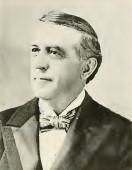 HENRY FRANCIS BROWN was a farmer
boy in Maine, when the advantages of the West appealed
to his ambition and invited him to the employment of his
energies and abilities in the more promising field which
they had to offer. His father was Cyrus S.
Brown, a farmer regarded as wealthy at that time, and
was located at Baldwin, Maine. He was a leading man of
the neighborhood and prominent in state politics.
His wife was Mary Burnham. Both were of old
families in that section. Cyrus Brown was born in
Baldwin, where he always lived, and reared a family of
ten children, all of whom are living and in good health
today. The parents have died but the children have
retained the old homestead in Baldwin and go there every
year for a family reunion. HENRY FRANCIS BROWN was a farmer
boy in Maine, when the advantages of the West appealed
to his ambition and invited him to the employment of his
energies and abilities in the more promising field which
they had to offer. His father was Cyrus S.
Brown, a farmer regarded as wealthy at that time, and
was located at Baldwin, Maine. He was a leading man of
the neighborhood and prominent in state politics.
His wife was Mary Burnham. Both were of old
families in that section. Cyrus Brown was born in
Baldwin, where he always lived, and reared a family of
ten children, all of whom are living and in good health
today. The parents have died but the children have
retained the old homestead in Baldwin and go there every
year for a family reunion.
Henry
F. Brown was born in Maine, on his father’s farm,
October 10, 1843, and when old enough was sent to the
Fryberg Academy for two years. He was also at school at
the Limerick Academy for two years. He came West when
seventeen years old, and located in Minneapolis in 1859.
He engaged in the lumbering business and has been
interested in that business almost continuously ever
since. He earned his first money at lumbering by driving
a team in the woods at twenty dollars a month. The next
year he rented a farm and taught district school for
three winters in succession and worked the farm in the
summer. His first thousand dollars earned in this way
was put in the lumbering business, but he lost it all
the first winter and found himself in debt a thousand
dollars more. He continued in the business, however, in
a small way and soon had recovered from his losses and
has made a large amount of money since. Mr. Brown has
also been identified with a number of other important
enterprises. He has a three-fourths interest in two
flour mills in Minneapolis. He is president and a large
stockholder in the Union National Bank, a director in
the North American Telegraph Company and one of the
largest stockholders. He is also director and
a large stockholder in the Minneapolis Trust Company. He
sustains the same relation to the Minneapolis Street
Railway Company and also the Minneapolis Land and
Investment Company.
Mr. Brown has always taken
a great deal of interest in the breeding of fine stock,
and his herds of blooded cattle are among the finest in
the country. He maintains a large stock farm near the
city of Minneapolis, and his fine herd of Short Horns
took the sweepstake prize at the World’s Fair in
Chicago, besides numerous other prizes for individuals.
Mr.
Brown was married in 1865 to Susan H. Fairfield of
Maine. They have a pleasant home at Fourth Avenue and
Seventh Street South, Minneapolis, but have no children
living. Mrs. Brown was a member of the World’s Fair
commission for the state of Minnesota, took an active
part in the management of the woman’s department of the
fair, and is active in philanthropic work in her own
city, where she is held in very high
regard.
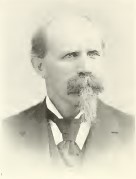 SEBA SMITH BROWN The first shot
fired by the American patriots to emphasize their
determination to be freed from the tyranny of Great
Britain was from a gun held in the hands of Captain
David Brown, the great grandfather of the subject of
this sketch. He lived at Concord, Massachusetts, and
commanded the Concord minute men on April 19, 1775,
when, at the North Bridge the regulars poured their
first volley across the river into the ranks of the
farmer boys and instantly killed Captain Davis, of the
Acton company. Captain Brown, raising his own gun to
ready, gave the command, “Fire!” at the same time firing
his own gun and bringing down the first Britisher in the
War of the Revolution. The gun he used that
day is now in good condition at the old homestead in
Baldwin, Maine. This branch of the Brown family is
traced back to Thomas Brown, who was born in 1651, and
died in 1718. His son, Ephraim, was born in 1689, and
was married to Hannah Wilson.
Their youngest son, of a family of eight
children, was Captain David Brown. He married Abagail
Munroe and twelve children were born to them. Their son,
Ephraim was the grandfather of Seba S. Brown. He was
born at Concord, but when a young man moved to Maine and
settled upon and cleared from the heavy woods the farm
upon which Cyrus Shell Brown, the father of Seba, was
born. Cyrus was born in 1802. He was a thrifty and
frugal farmer; a man of good judgment and absolute
integrity, held in high esteem by his neighbors. He was
a colleague of the late James G. Blaine in the Maine
legislature in 1862. His wife, Mary, was born in 1805 in
Parsonfield, Maine. She was the daughter of Major Paul
Burnham and Comfort Pease. SEBA SMITH BROWN The first shot
fired by the American patriots to emphasize their
determination to be freed from the tyranny of Great
Britain was from a gun held in the hands of Captain
David Brown, the great grandfather of the subject of
this sketch. He lived at Concord, Massachusetts, and
commanded the Concord minute men on April 19, 1775,
when, at the North Bridge the regulars poured their
first volley across the river into the ranks of the
farmer boys and instantly killed Captain Davis, of the
Acton company. Captain Brown, raising his own gun to
ready, gave the command, “Fire!” at the same time firing
his own gun and bringing down the first Britisher in the
War of the Revolution. The gun he used that
day is now in good condition at the old homestead in
Baldwin, Maine. This branch of the Brown family is
traced back to Thomas Brown, who was born in 1651, and
died in 1718. His son, Ephraim, was born in 1689, and
was married to Hannah Wilson.
Their youngest son, of a family of eight
children, was Captain David Brown. He married Abagail
Munroe and twelve children were born to them. Their son,
Ephraim was the grandfather of Seba S. Brown. He was
born at Concord, but when a young man moved to Maine and
settled upon and cleared from the heavy woods the farm
upon which Cyrus Shell Brown, the father of Seba, was
born. Cyrus was born in 1802. He was a thrifty and
frugal farmer; a man of good judgment and absolute
integrity, held in high esteem by his neighbors. He was
a colleague of the late James G. Blaine in the Maine
legislature in 1862. His wife, Mary, was born in 1805 in
Parsonfield, Maine. She was the daughter of Major Paul
Burnham and Comfort Pease.
Their
son, Seba, was born August 7, 1841, on the old farm at
Baldwin, Maine. The lad followed the usual vocation of
farmers’ boys of that period worked on the farm during
the summers and attended the district school in the
winters. This, he did until he was eighteen years of
age. During the next three years he studied in Gorham
Academy, paying his own expenses in part by teaching in
the winters. When President Lincoln issued his call for
men in 1862, Seba was at his books ; these he left with
his roommate, and, receiving a blanket from his mother,
which she had woven, he started out to serve his
country. He joined Company K,
Twenty-fifth Maine Infantry, as a private, and was
chosen by his comrades as second lieutenant. During the
next nine months of his service, however, he received
rapid promotion; was commissioned first lieutenant and
then captain of his company. With it he served in the
Army of the Potomac; but was detached for picket duty at
Chantilly, Virginia,, during the summer of 1863.
In
November of that year the regiment’s term of service
having expired, Mr. Brown left the army and came to
Minnesota. His first winter here he spent in the
pineries, swamping and tending sled for a salary of
thirty-five dollars a month. From that time to the
present Mr. Brown has been engaged in the lumbering
business in some form or other.
In 1889 he was appointed by Governor Merriam as
surveyor general of logs and lumber for the second
district of Minnesota. The fact that he is now serving
his fourth term in this office is an indication of his
competency to hold this responsible position. He has
always been a Republican. He is a member of the
Grand Army of the Republic and of the Loyal Legion; also
of the Masonic body. October 17, 1877, he was married to
Ann Elizabeth Anderson. Four children have been born to
Mr. and Mrs. Brown, of whom only two are living, Cyrus
Shell, aged twelve, and Roy Stuart, aged seven.
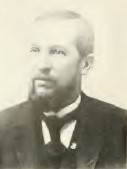 WILLIAM J. BURNETT
manager and proprietor of the Northwestern Hide and Fur
Company, of Minneapolis, was born at Pittsburg,
Pennsylvania, in 1843, the son of Virgil Justice Burnett
and Harriet S. Burnett. His ancestry on both sides of
the family were Scotch-English people, his father’s
family presumed to have been of the same as that of
Bishop Burnett. In 1837 they were engaged in the grocery
business in Newark, New Jersey, when their business was
ruined by the great panic which wrecked so many
fortunes. Unable to realize upon their accounts they
turned over all their goods to their creditors and
started for the far West. It was while they were en
route that William J. was born at Pittsburg, then a
small but thrifty city. Here the Burnett family halted
for a time and the father, who was a carriage blacksmith
by trade engaged in his handicraft in order to earn
money to pursue the Western journey to Terre Haute,
Indiana. They went by boat from
Pittsburg at Vincennes and by canal to Terre Haute. When
they arrived there the father had just fifty cents left,
but having friends, and, more important, having industry
and skill he was soon in comfortable circumstances.
He was a man of studious tastes, and, like Elihu
Burritt became known as the “learned blacksmith.” He was
elected to the legislature in 1856, and was one of the
prime movers in the passage of the famous Indiana liquor
law. He died in 1859,
honored by all who knew him and survived by his wife,
six boys and two girls. The mother is still
living at the advanced age of eighty-eight, and is in
the enjoyment of remarkable health and vigor. WILLIAM J. BURNETT
manager and proprietor of the Northwestern Hide and Fur
Company, of Minneapolis, was born at Pittsburg,
Pennsylvania, in 1843, the son of Virgil Justice Burnett
and Harriet S. Burnett. His ancestry on both sides of
the family were Scotch-English people, his father’s
family presumed to have been of the same as that of
Bishop Burnett. In 1837 they were engaged in the grocery
business in Newark, New Jersey, when their business was
ruined by the great panic which wrecked so many
fortunes. Unable to realize upon their accounts they
turned over all their goods to their creditors and
started for the far West. It was while they were en
route that William J. was born at Pittsburg, then a
small but thrifty city. Here the Burnett family halted
for a time and the father, who was a carriage blacksmith
by trade engaged in his handicraft in order to earn
money to pursue the Western journey to Terre Haute,
Indiana. They went by boat from
Pittsburg at Vincennes and by canal to Terre Haute. When
they arrived there the father had just fifty cents left,
but having friends, and, more important, having industry
and skill he was soon in comfortable circumstances.
He was a man of studious tastes, and, like Elihu
Burritt became known as the “learned blacksmith.” He was
elected to the legislature in 1856, and was one of the
prime movers in the passage of the famous Indiana liquor
law. He died in 1859,
honored by all who knew him and survived by his wife,
six boys and two girls. The mother is still
living at the advanced age of eighty-eight, and is in
the enjoyment of remarkable health and vigor.
On
November 22, 1890, William J. Burnett commenced business
in Minneapolis under the name of the Northwestern Hide
and Fur Company 31417 Main street Southeast.
In the fall of 1895 he purchased the property at
409 Main Street Southeast, where he provided himself
with all modem conveniences for the transaction of his
business. His great success is largely due to his
progressive methods and to a number of valuable devices
of his own invention pertaining to the hide and fur
trade, which have proved a source of profit to him.
Mr. Burnett has displayed unusual enterprise in
the conduct of his business, one exhibition of it being
the employment of two men, hired within the past year,
to explore on foot from the Deer River to Rainy River,
through the great forests of that wild region, the chief
purpose of this venture being to find what its resources
are for agriculture, hunting, fishing and trapping. This
information he has given to the public in various
contributions to the newspapers. This section of the
country, he believes, needs only transportation
facilities to attract immigration, and which he thinks
will soon add greatly to the wealth of the state and the
growth of the Twin Cities. He has been strongly
impressed with the fact that such a vast area of rich
country, almost one-third of this great state, should
not still lie idle right at the doors, as it were, of
the great cities of Minneapolis, St. Paul and
Duluth. He thinks that all
that is needed is railroad facilities to create an
interest in that section equal to that of the Dakotas in
1880, although the region he regards as superior in
resources, as its numerous lakes and streams are
abundantly stocked with the choicest fish, and the
forests are the home of the finest of game and
fur-bearing animals, while in the summer it is the home
of millions of waterfowl. Mr. Burnett was married to
Miss Alida Suits, of Huron, South Dakota, in June, 1888.
They have one daughter, Harriet Alida, age six. They
reside in Southeast Minneapolis and are members of the
Andrew Presbyterian church.
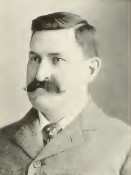 TIMOTHY
EDWARD BYRNES Probably no man in the North Star State
has been more active in campaign work in the interests
of his party, than the man whose name stands at the head
of this sketch. “Tim” Byrnes, as he is familiarly called
by his friends is of Irish parentage. Both his parents
(Daniel and Hannora Byrnes) were born in Ireland,
emigrating to this country when children. His father
followed the occupation of farming and was fairly
successful in life. TIMOTHY
EDWARD BYRNES Probably no man in the North Star State
has been more active in campaign work in the interests
of his party, than the man whose name stands at the head
of this sketch. “Tim” Byrnes, as he is familiarly called
by his friends is of Irish parentage. Both his parents
(Daniel and Hannora Byrnes) were born in Ireland,
emigrating to this country when children. His father
followed the occupation of farming and was fairly
successful in life.
Timothy was born at Bellow’s Falls,
Vermont, November 22, 1853. He came to Minnesota, while
yet a lad, with his parents, and his early education was
acquired in the common schools of this state.
Subsequently he attended the University of
Minnesota, taking the scientific course, and graduating
from this institution in June 1879. Having then a desire
to take up the study of law. he entered Columbia Law
School in New York City. After having been admitted to
the bar, he began the practice of his profession in the
city of Minneapolis. In this he has been very
successful. Mr. Byrnes, however,
did not acquire his wide reputation so much through his
law practice as in the field of politics.
He
has always been a Republican, and from the first an
active supporter of his party principles. In 1887 he was
elected a member of the executive committee of the
National Republican League from Minnesota, and has
remained a member of this committee since that time. Mr.
Byrnes has never been a candidate for any elective
office, but at this time he took a deep personal
interest in the work of organizing the league in this
state and upon its organization was made president,
which office he filled until 1891. During that year he
was also organizer of the national league, and rendered
very efficient service. In 1889 he was given the post of
the chief of the appointment division of the United
States Treasury Department under Secretary Windom, and
for two years was Mr. Windom’s most trusted assistant.
During this time Mr. Windom gave him practical control
of the entire patronage of the department, making all
his appointments upon the recommendations of Mr. Byrnes.
The Republican National Committee in 1896, recognizing
Mr. Byrnes’ extensive ability, appointed him
sergeant-at-arms for the National Convention, held at
St. Louis that year. Mr. Byrnes devoted all his time to
making the arrangements as perfect as possible and that
the national committee’s confidence was not misplaced,
may be judged by the fact that they declared that this
convention was the best managed of any in the history of
the party. In all political campaigns Mr. Byrnes has
been very active, and probably has given more time to
national party work than any man in the state. He has an
extensive and intimate acquaintance with men of
prominence and national reputation in this country.
On
May 15. 1883, he was married to Clara M.
Goodrich. Mr. and Mrs. Byrnes have three
children, George G., Clifford H. and Frederick E.
The information
on Trails to the Past © Copyright
may be used in personal family history research, with
source citation. The pages in entirety may not be
duplicated for publication in any fashion without the
permission of the owner. Commercial use of any material
on this site is not permitted. Please respect the
wishes of those who have contributed their time and
efforts to make this free site possible.~Thank
you! | | | |



